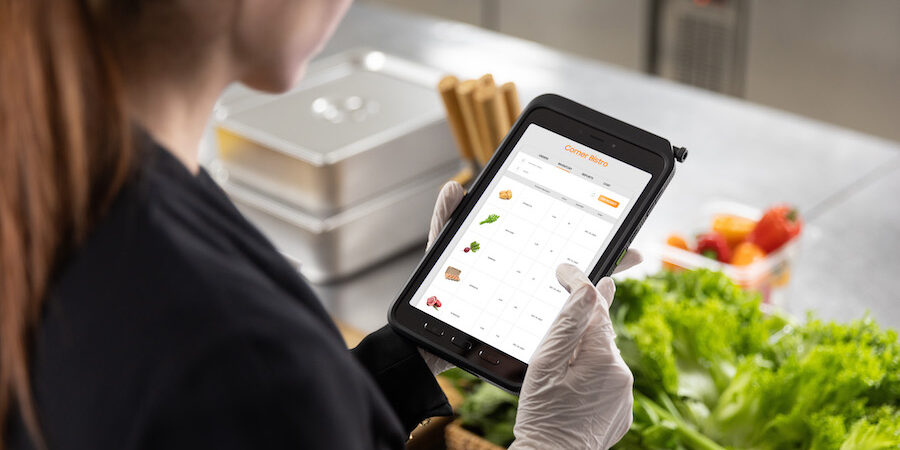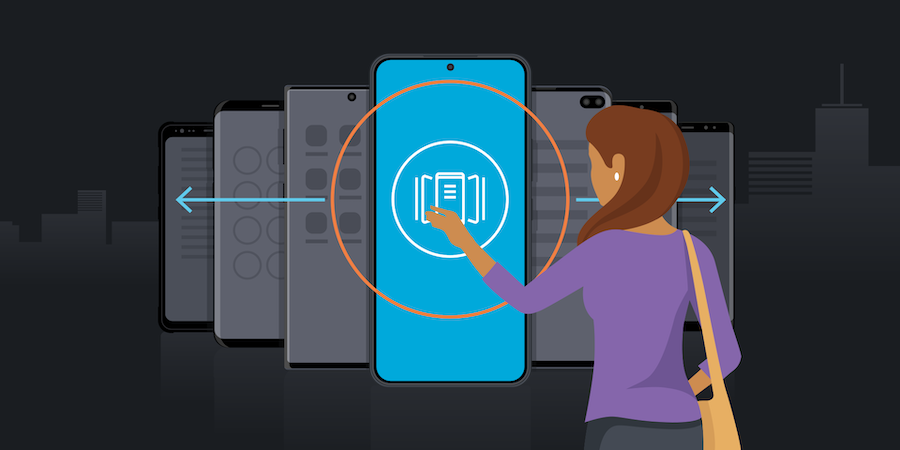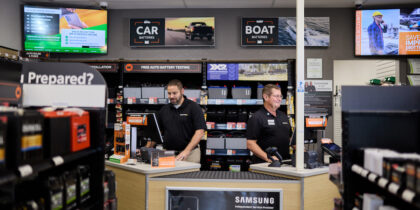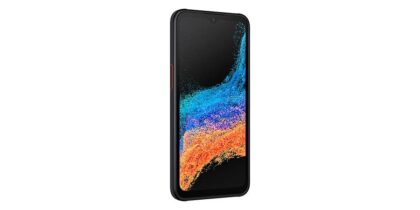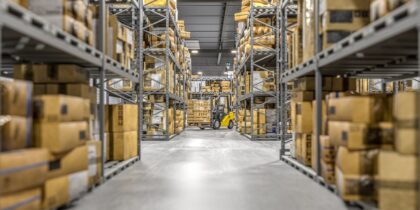Struggles with inventory accuracy can cost the global retail sector a lot of money. No one can afford to let that level of waste and missed opportunity grow.
Next-gen retail, particularly strategies focused on omnichannel marketing and sales, relies on inventory accuracy and visibility to succeed. Promising an item to a customer and failing to deliver it risks alienating them at a time when positive shopping experiences are paramount. Omnichannel services like click-and-collect, for instance, have grown faster than expected, boosting retailers’ bottom line when they get it right. Many Buy Online, Pickup In-Store (BOPIS) shoppers also make additional in-store purchases when they arrive to pick up their orders.
Changes in the way consumers shop have raised customer expectations, but they also allow retailers to finally ensure accurate inventory. By replacing costly single-purpose scanning devices with rugged tablets like Galaxy Tab Active5, for instance, retailers can significantly improve inventory accuracy and visibility while enhancing the in-store experience for customers and employees alike. And they can do so cost-effectively — boosting productivity, performance and the bottom line.
Below, we’ll explain some of the myriad ways retailers can leverage technology like Galaxy Tab Active5 to meet customer expectations around new ways of shopping while more accurately matching inventory with demand.
Exposing the inventory data gap
Once products leave the supply chain and make their way to the sales floor, retailers lose most of their product visibility until they reach the checkout. In a chaotic shopping environment accessed by hundreds of people, items are routinely misplaced, damaged, miscounted or stolen.
Inaccurate inventory used to affect only what customers found — or didn’t find — in an individual store. But omnichannel magnifies the impact because now correct inventory affects every business channel and process, including the contact center, social media, click-and-collect, BOPIS, ship-from-store and store-to-store transfers. Accurate inventory data is necessary for filling orders quickly, correctly and at the lowest possible cost. This explains why 55% of retail CFOs are using approaches like scenario modeling to improve their inventory accuracy.1
A digital purchase based on inventory data represents a promise — a promise made by the brand to fulfill the customer’s expectations. When an item turns out to be out of stock, a disappointed shopper will likely take their business elsewhere. Poor customer service translates to an estimated $846 billion in losses in the U.S., according to Qualtrics XM Institute.2 And customers who shop elsewhere out of frustration are tough to win back.
Some retailers have rushed into omnichannel services without addressing inventory inaccuracies. Now, they’re trying to compensate for this uncertainty through strategies like:
- Overstocking to reduce the risk of running out of inventory. This approach drives up inventory carrying costs.
- Hiding stock from other channels because their inventory data is unreliable. This results in lost sales, both for individual items and incremental add-on purchases.
Incorrect inventory information also drives faulty replenishment processes, increasing the business’s cost and risk. For instance, when a food retailer has insufficient information and visibility on perishable items and their shelf life, this increases food waste.
Even without accurate inventory information, store associates will have to attempt to help customers locate items — which is especially frustrating when the associate has to leave the customer to look up the information and returns empty-handed, or with incorrect information. Remember, store associates are now competing for item sales that are being sought through multiple channels, including the store website and partner companies promoting their goods. Lacking the proper tools and data to do the job contributes to associated dissatisfaction and high turnover.
What stands in the way
Despite concerted efforts to increase retail inventory accuracy over the last decade, a number of obstacles remain, including:
- Limited tools: Until recently, retailers’ main inventory management tool for the store floor was the single-purpose barcode scanner. These expensive, heavy, industrial tools were typically allotted a few to each store. Only a handful of associates could manage inventory at one time. It’s not uncommon for workers to stash a scanner out of sight during their breaks to ensure they have access to it when they return to work.
- Data darkness: Because of the limited number of available scanners, retailers are collecting just a small trickle of data about the status of their inventory at any given time. With lack of visibility, items consistently go missing, are misplaced or are otherwise unaccounted for — and are increasingly prevalent in other sales channels.
- Paper-based processes: Many stores still use paper-based inventory management, which leads to more frequent errors, reduced productivity and delayed access to data.
- Unmotivated and undertrained associates: Retailers who don’t expect to increase inventory accuracy through store processes don’t train their associates in inventory management best practices. And associates who know they can’t support customers with reliable information tend to avoid customers, degrading their shopping experience. Equipping associates with the mobile tools they need to succeed on day one changes how that experience unfolds.
- High costs: Paper-based processes and undertrained associates tend to drive up inventory management costs through methods like increasing cycle count frequency and manually correcting errors. And there’s the digital elephant in the room — brand backlash via social media and elsewhere on the internet. One angry review can lead to huge backlash and damage customer loyalty.
- Change management: Existing retail culture and business processes are well entrenched. Adopting new practices and technologies requires considerable effort in change management, which can be difficult to achieve across a highly distributed enterprise.
Retail executives often regard adopting new inventory management technology as an all-or-nothing proposition. The Internet of Things (IoT) can provide a way to better track products and monitor inventory levels, for instance, but dismiss the associated platforms and tools as out of reach for their operations.
How technology is changing the inventory game
Instead of being forced into an overwhelming all-or-nothing approach, retailers can phase in new technologies incrementally, applying them to limited SKUs or certain areas of the store to start improving accuracy and visibility. Some options include these recent tech advancements:
- Elevation of smart devices: Rugged tablets like Galaxy Tab Active5 are powerful, affordable and ubiquitous, performing as well — or better than — legacy barcode scanners in reliability, durability, processing power, security features and camera quality, as well as warranty, battery life and accessories. Using software-based data capture tools on smart devices, retailers can achieve all the functionality and performance of a dedicated barcode scanner. The same device can house an unlimited roster of apps, digitally enabling both operations and the customer experience on the sales floor. Direct transaction tools like mobile point-of-sale (mPOS), for example, increase conversions. The low price point allows retailers to transform the store workforce with corporate-owned mobile devices — or a Bring Your Own Device (BYOD) program — without the budget and maintenance concerns associated with single-purpose scanners or sleds.
- Consumerization of enterprise IT: Once aimed at a small number of specially trained users, many enterprise apps are now offering modern platforms designed around real-life workflows on an intuitive user interface, accessible to dozens of users — or hundreds — all across the enterprise, leading to increased tech adoption rates.
- Advancements in computer vision and AI: A tablet’s camera can now be transformed into an advanced barcode and text scanner. Data capture software can collect this data quickly and easily, regardless of whether the object is close to the camera or many feet away, at an angle, on a curve, in low light or partly obscured by damage, glare or stray marks. With a sweeping motion, users can rapidly capture barcodes and text across an entire shelf, boosting productivity and answering the demand for real-time data.
- Augmented reality (AR) overlays: Layering AR onto the images captured by a software-driven data collection tool dramatically transforms the user experience. When an associate uses a smart device like Galaxy Tab Active5 with these capabilities, they see what they’re pointing the camera at with additional data superimposed. During inventory management tasks, such as receiving or replenishment, retail associates can point their tablet’s camera at the item they’re scanning to view relevant information, such as the in-stock inventory of that particular SKU. And while they’re helping a customer, an associate can use the same camera function to access product information on the sales floor, such as size and color options, current inventory, links to multimedia demos and other selling tools to help convert the customer.
- Multiscanning: Data capture software with multiscanning enables several barcodes to be scanned from the same image at once, significantly increasing speed and productivity. Associates can use the same functionality to find a particular barcode by panning their camera across a crowded shelf; the scanning software can automatically identify the barcode in question. Multiscanning and AR in tandem streamline tasks like picking items for click-and-collect or identifying out-of-place merchandise. Besides speeding up store processes, these capabilities democratize data access on the sales floor and upskill the retail team.
- Robust connectivity: Today’s sophisticated networks, such as SD-WAN, accommodate a greater volume of data and offer next-gen features such as network optimization and advanced security. Retailers can add a large fleet of new devices and apps without negatively impacting critical traffic such as payment approvals.
Improving inventory management with new tech
With increased inventory accuracy and visibility, retailers are ready to compete in the 21st-century market. And inventory management can be further expanded to fully eliminate manual processes, such as in these use cases:
- Stocktaking, receiving, replenishment: Routine tasks that once required a costly, dedicated scanner are now accessible to any associate at any time. With faster and higher-capacity data capture, retailers can capture more data more often — and update central data stores in near real time, ensuring inventory is always accurate and up to date. With AR overlays, associates can, for example, check current product inventory while they’re scanning, so they can reorder the appropriate amount.
- Click-and-collect picking: Speed is essential to meeting tight delivery windows for click-and-collect. When every associate has the tools to respond to orders, retailers can easily redirect team members to picking orders as demand requires. To find products more quickly, associates can use computer vision-based data capture on a smart device to scan an entire shelf at once.
- Customer service: Associates can access product information, inventory, location data and more from a simple barcode scan — providing fast, effective customer service, engaging more with shoppers and increasing conversions. When it comes time to provide services outdoors, such as curbside pickup, a device like Galaxy Tab Active5 has the screen brightness necessary to maintain high service standards.
- Clienteling: To take shopper engagement to the next level, retailers can incorporate personalized customer data — like purchase history, VIP status and recent searches — into an AR overlay on a product image. Personalized promotions further enhance their experience. Promoting relevant accessories for their recent purchases, for example, can help drive conversions. Galaxy Tab Active5’s increased screen refresh makes it an ideal device for showing customers this kind of product information and rich media to help their purchasing decisions.
- Price tag verification: To verify price tag accuracy, associates can simply point their Galaxy Tab Active5 camera at a group of labels; their data capture solution can automatically read all the labels and compare the data to your stored price files. Overlaid AR highlights the correct and incorrect tags, so associates can quickly generate accurate replacement labels.
- Planogram compliance: Retailers can also use computer vision-based data capture and AR to compare a shelf set to its planogram. As the camera instantly identifies discrepancies, associates can make quick corrections.
Replacing single-purpose scanning devices with smartphones and tablets, retailers are well-positioned to adopt new technology capabilities as they develop. For example, an inventory restocking app with indoor mapping can streamline the restocking process by showing associates the most efficient route across the store floor.
Rugged tablets and mobile data capture benefit retailers
With dozens more devices on the store floor, retailers can redesign store processes to support more frequent inventory data collection, alongside other tasks. A device like Galaxy Tab Active5 can help ensure maximum productivity thanks to its long-lasting smart battery and no-battery mode, which help power you through your workday. Pogo pin charging, meanwhile, is perfect for employees who need to quickly grab a device and go.
Smart devices running software-based data collection offer these myriad benefits:
- Omnichannel enablement: Boosting inventory accuracy allows retailers to meet high consumer demand for omnichannel services such as click-and-collect.
- Hardware savings: Smart devices free retailers from the cost and limitations of dedicated scanners, including the considerable cost of maintaining and supporting these devices. To help them achieve return on investment (ROI), retailers can amortize the cost across a wide range of applications and use cases.
- Democratized data access: Putting a multipurpose smart device in the hands of every associate gives your entire team equal access to unlimited use cases, so everyone can positively impact your operations and sales processes.
- Optimized inventory: Inventory management based on smart devices allows for more cost-effective data collection, helping prevent under/overstock and lost sales and avoiding large capital expenditures.
- Inventory visibility: When those on the store floor have access to accurate inventory data, this much-needed visibility drives better communications, overall efficiency, productivity and speed.
- Deeper customer engagement: Associates can access accurate information about particular products, inventory and shoppers — including personalized data — which encourages greater customer engagement and drives additional revenue.
- Increased associate satisfaction: Workers provided with the tools to do their jobs effectively experience greater job satisfaction, which can help lower employee turnover.
- Future-proofed digital platform: By moving to an open mobile platform, retailers are prepared to add new inventory management or customer engagement apps at any time.
Adopting next-gen inventory management
Smart devices don’t have to be an all-at-once switch. Retailers can take a phased approach, migrating to smart devices incrementally, starting with high-impact use cases. You might start with a specific department, brand or location, or you might target high-demand or high-value items. Along the way, you’ll figure out what works and what doesn’t, so you can continually improve the process.
What's the best phone for your business?
Take this quick assessment to discover the smartphone most tailored to your business needs. Download Now
Other best practices include working with fully engaged, retail-experienced vendor partners. They can supply well-designed, enterprise-grade hardware and software, as well as industry expertise, state-of-the-art security and robust logistics and support capabilities — all of which can help ensure the long-term success of your mobile rollout. Your mobile data capture software should also offer strong integration tools, so it can easily connect to a variety of inventory and customer engagement solutions, as well as back-end data sources such as enterprise resource planners (ERPs).
Key to success in 21st-century retail
Innovative mobile devices and software complement other technologies, such as radio-frequency identification (RFID). While RFID is ideal when there aren’t visible barcodes, such as for apparel, high-value goods or reusable totes, RFID remains cost-prohibitive for many other use cases. For mass-market and low-margin goods, particularly food items, barcodes are far more cost-effective. The combination of smart devices, computer vision and AR provides powerful inventory management capabilities that mirror RFID for barcoded products.
The retail industry’s issue with poor inventory accuracy has met its match in omnichannel services, which require near real-time accuracy to be successful. By equipping retail teams with smart devices like Galaxy Tab Active5 — enhanced by computer vision and AR — retailers can re-engineer their store operations to support highly accurate and widely visible inventory as well as deeply engaging customer experiences.
Whether you’re a large enterprise or a small business, Samsung’s innovative retail technology solutions can help you reimagine and reconnect retail, enriching the ultimate consumer experience.
1https://chainstoreage.com/bdo-retail-cfo-survey-key-takeaways-recommendations
2https://www.xminstitute.com/blog/trillion-sales-at-risk-2024/
